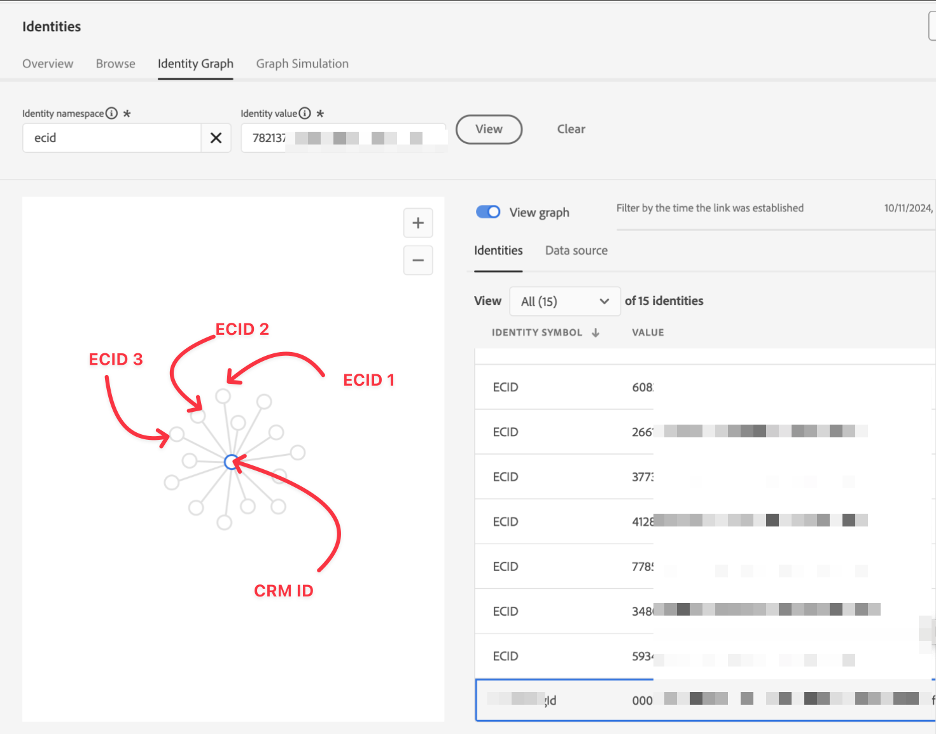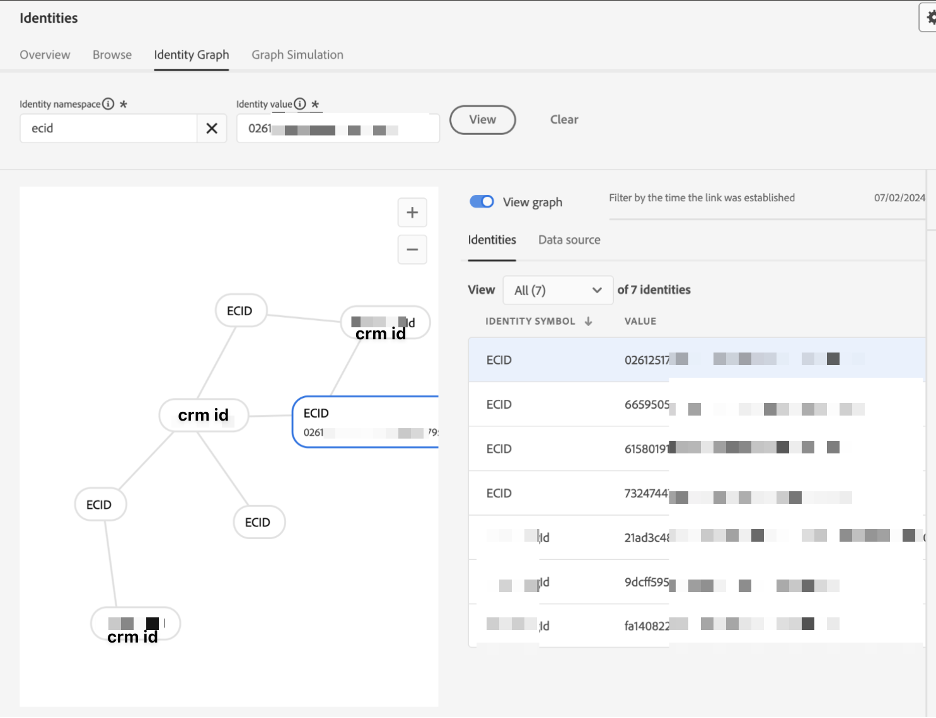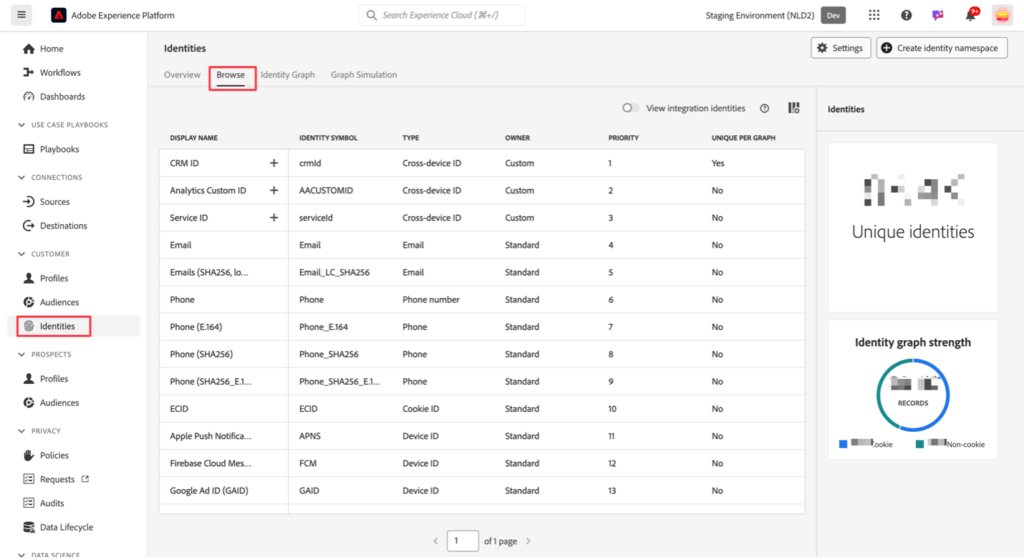Recently, there have been many discussions and articles on Artificial Intelligence (AI), which is an important topic, now changing how many industries operate. We had the chance to talk to Dana Icikzone, Senior Solution Consultant at Adobe, about this and discuss the release of their new AI Assistant within Adobe Experience Platform.
This blog post is built on our interview with Dana, by reading it you´ll learn more details about the AI Assistant within the Adobe Experience Platform: How different roles can benefit, the general business impact, and perhaps most importantly; the trust and privacy of it. You will also gain valuable perspectives, guidance, and recommendations on how to work with and fully utilize it, from an expert’s point of view.
This is just an introduction. If you are interested in diving deeper into this topic, we are constantly creating blog posts, Mini Masterclasses and content deep diving into the most recent AI prompts, trends and impacts. Follow our LinkedIn page and get noticed when we release something new. But first...
What is the AI Assistant?
To briefly introduce you to the AI Assistant - it is a conversational interface powered by generative AI models. It allows users to ask questions and receive answers based on a combination of base models, custom models, decision-making algorithms and business goals. Embedded within the experience platform, it operates across all applications, including the Real-Time Customer Data Platform (RT-CDP), Adobe Journey Optimizer (AJO), and Customer Journey Analytics (CJA).
The AI Assistant is designed to work seamlessly across various applications within the Adobe Experience Platform. This integration ensures that users can have consistent conversations and obtain relevant answers regardless of the specific application they are using. For instance, an RT-CDP user can still get insights based on CJA data, making workflows more efficient.
Some key technical features
The AI Assistant offers several key features that enhance its utility:
Conversational interface: Allows users to interact naturally and obtain quick answers.
Custom models: Tailored to specific customer needs, ensuring data privacy and relevance.
Role-based access control: Ensures that users can only access data they are authorized to view.
Operational insights: Provides actionable insights based on enterprise data.
Knowledge expansion: Helps users expand their understanding of the platform and their roles.
Verifiable layers: Ensures transparency by providing sources and explanations for all data.
How can the AI assistant benefit my role?
Many different departments and roles benefit from the AI Assistant, including, for example, IT teams, data analysts, and the marketing department. Dana highlighted how it can serve as a companion to developing expertise, managing routine tasks, and providing quick answers to workflow-related questions.
"It should be a companion helpig anyone to become kind of an extended expert," she said.
The IT department
As responsible for ensuring data is collected and being assessable, the IT department can utilize the AI Assistant for data exploration, management, insights, and discovery. For example, in automating routine tasks, thereby freeing up time for more strategic activities. The AI Assistant can answer operational questions, such as how often a segment is used or where a schema field is applied, making data management more efficient.
The data analysts
Data analysts are the professionals ensuring data is thoroughly analyzed and interpreted. They can use the AI Assistant to dive deeper into data sets, perform complex queries, and gain insights quickly. The AI Assistant helps in understanding data structures, troubleshooting specific scenarios, and optimizing workflows. It can also assist in finding and analyzing audiences, making data analysis more streamlined and effective.
The marketing department
Marketing teams ensure data is activated and utilized in strategic decisions, and they also benefit significantly from the AI Assistant. For example, by obtaining quick answers to workflow-related questions and troubleshooting issues. It can aid in campaign creation, audience discovery, and optimizing customer journeys. What the AI Assistant does is help filter out information available within the platform. This can support the decisions you make in terms of creating campaigns, making marketing operations both more efficient and effective.
Prompts and usage
Using the AI Assistant effectively involves specific prompting skills. Users can ask knowledge questions, operational insights questions, and troubleshooting queries. For instance, a digital analyst might ask, "How do I build a segment?" or "What is an identity map?" These prompts help users quickly access necessary information without sifting through extensive documentation.
Another practical example Dana shared is the AI assistant's ability to help find specific audiences within a platform. She explains the problem: "Imagine that you would have to go through every single audience, and there might be thousands of different audiences within a platform". Traditionally, managing your audiences would require a lot of time, creating new audiences, often duplicating existing ones. The AI assistant helps avoid these inefficiencies by providing quick access to the necessary information. For instance, it can help a data analyst quickly identify the most relevant audience for a marketing campaign, saving you a lot of time.
Business impact
The AI Assistant impacts businesses by enabling quick access to enterprise data, facilitating knowledge expansion, and automating tasks. This leads to increased productivity, faster campaign creation, and overall improved efficiency. Dana emphasized how "...being more productive, more efficient and faster as a resource, will enhance your operations." The integration of AI in business processes also helps bridge the gap between different roles, making teams more versatile and efficient. For instance, it can help data analysts understand marketing strategies, and vice versa, leading to more comprehensive and effective campaigns.
Increasing productivity: By automating routine tasks and providing quick access to information, the AI Assistant allows employees to focus on more strategic activities. This leads to increased productivity and faster decision-making processes.
Efficiency improvement: The AI Assistant helps in reducing the time and effort required to perform various tasks. Faster campaign creation and efficient data management contribute to overall easier, efficient and enhanced operations.
Enhancing knowledge and expertise: The AI Assistant aids in expanding the knowledge and expertise of employees by providing quick answers to complex questions. This helps in improving product proficiency and role expansion, making employees more versatile and valuable to the organization.
Trust and privacy
Trust and privacy matters are crucial in the implementation of AI as assistants. Dana emphasized that the AI Assistant on the Adobe Experience Platform is built with these considerations heavily in mind. It uses custom models specific to each customer, ensuring that data is never accessed outside the customer's environment. Role-based access controls further ensure that users can only access data they are permitted to see.
Privacy, security, and governance
The AI Assistant was built with privacy, security, and governance at the forefront. Users must be granted permission to interact with the AI Assistant, and role-based access control policies are strictly honored. This ensures that only authorized personnel can access specific data sets and information.
Customer data protection
The AI Assistant is also designed honoring customer data stewardship. Data is not used or shared across customers, and filters can be leveraged to scrub Personally Identifiable Information (PII). All data provided by the AI Assistant comes with verifiable layers, such as source and explanation, ensuring transparency and trust. Importantly, no third-party data is used to provide answers, which further safeguards customer information.
Dana highlighted, "The AI Assistant uses a combination of models, and one is the custom models that are customer-specific, and those models would never be used, or the data would never be accessed outside of that customer."
Verifiable layers
One of the spotlight features of the AI Assistant is the provision of verifiable layers. Users can always verify where the answer comes from, which is crucial for maintaining trust and accuracy. Dana noted, "There's always a source you can verify, where the answer comes from, which is really important within an AI system."
Future of AI
The future of AI serving as assistants is promising, with potential advancements in automating tasks, generating new segments, and even suggesting optimal strategies based on set goals. Dana believes that as technology evolves, it will continue to drive innovation and efficiency in business operations. "I think generative AI is probably the biggest game changer for Adobe in the past decade and has an incredible potential for customer experience solutions” she explains.
AI Assistants are transforming how businesses operate by providing quick access to data, enhancing productivity, and ensuring trust and privacy. As Dana highlighted, the technology's impact on various roles and business processes will only grow, making it an indispensable tool in the modern business landscape.
Want to know more? Read more about the AI Assistant at Adobe and join the conversation: Adobe AI Assistant
We are constantly creating more blog posts, Mini Masterclasses, and content diving deep into AI. If you don't want to miss out follow our LinkedIn page here -> Accrease (Partner of the year)































